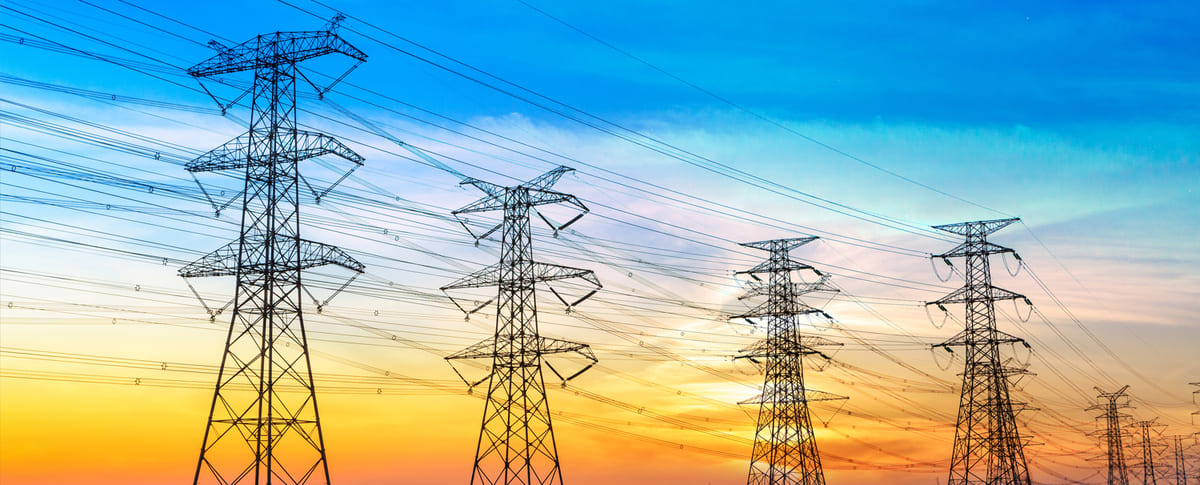Understanding Transmission Towers: A Brief Introduction

It's not uncommon to see nesting birds, like hawks, resting on power lines or building nests on girders. But did you ever stop to think about what makes them not get electrocuted? It is because the legs of the bird have equal electrical potential, which explains why electricity doesn't travel through their bodies. But how does it happen? The answer is transmission towers. Further explanation will follow in this blog.
The advent of transmission towers was prompted by an escalating industrial demand for power.
What exactly are transmission towers? Why do they exist? What is their significance? In what way are they built? \- Each of these questions should be discussed in the following paragraphs. Therefore, let's dig into the meat of the matter right away.
What is a Transmission Tower?
Electric transmission towers transport massive volumes of high-voltage current, typically ranging between 23,000 and 765,000 volts, over great distances, similar to the interstate highway system. It is common to see them in industrialized states and cities. Their high-voltage cables connect wind farms or power plants to the power substation, as well as to source substations and satellite substations in nearby populated areas. According to their intended use, transmission towers are classified as electric towers or cell phone towers. Electric companies often consider transmission towers to be one of their most critical commercial properties.
What does a Transmission Tower Do?
Transmission towers are structures built to support overhead power lines, ground cables and electrical conductors. Besides carrying electricity across hundreds of kilometres, they also provide strength and prevent the cables from sagging and getting contaminated.
The use of transmission towers is no longer limited to transmitting electrical power over long distances but can be extrapolated for the transmission and reception of radio, mobile telephony, broadcasting, and other electromagnetic signals as well.
Many of them are also utilized as weather data collectors. You may see cup-shaped anemometers indicating the wind speed or other meteorological equipment spinning.
You may like: 4 Different Varieties of Transmission Towers With Respect To Their Applications
Why are Transmission Towers Important?
The following points demonstrate the significance of transmission towers:
- They maintain the flow of power reliably and safely.
- Direct transfers enable the delivery of power through substations at the lowest possible energy loss to different types of customers.
- The lights on transmission towers help to identify their locations when travelling at night.
- Electricity does not flow through the towers themselves unless lightning strikes the wire running along the top. In the event of a lightning strike, the cable absorbs or deflects the energy, and it is safely conveyed to the ground through the tower. It is for this reason that birds sitting on transmission tower cables do not die of electric shocks.
How are Transmission Towers Constructed?
A lattice pole construction provides a sturdy structure to withstand even the roughest weather conditions without causing damage.
Power lines with higher voltages require more space between each cable and other objects, enabling vehicles, people, and other equipment can move freely underneath them. Consequently, most of the transmission towers stand 55 feet to 150 feet high.
If the tower is being constructed for the transmission of electrical power, wood or concrete may be used, and if the tower is being constructed for telecommunication or radio, metals such as ductile iron or galvanized steel can be used. Transmission towers for cellular networks are thin and supported via long wires called guy wires. These towers have different shapes, heights, and mechanical strength depending on the stresses they endure.
The high-voltage, steel-reinforced aluminium cables are insulated with porcelain or toughened glass. For efficient transmission of electricity, they are always arranged in groups of three.
The Bottom Line
Please take a moment to consider the following cautionary note. Whenever inspecting transmission towers, remember that the higher the pole, the greater the voltage. So never attempt to climb or get near overhead lines, as doing so can cause severe shocks, burns, or even death. Additionally, make sure to keep a safe distance when you are looking at them. Reliable transmission tower manufacturers ensure that these structures are designed and built with the highest safety and durability standards to prevent accidents and maintain uninterrupted power flow.